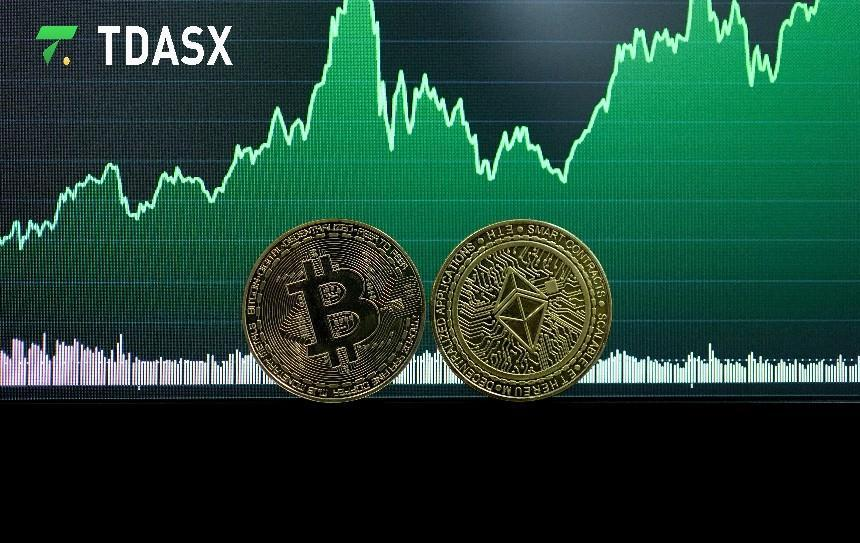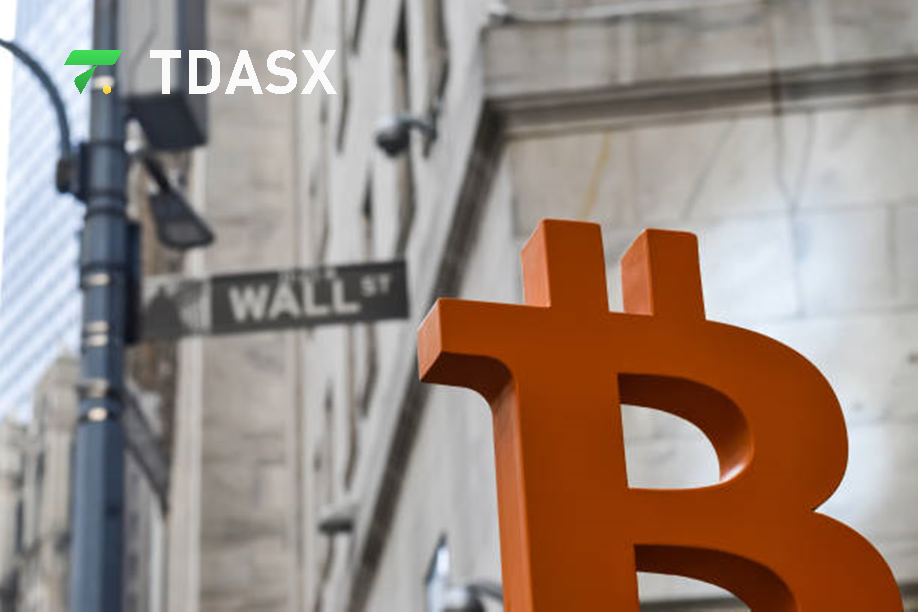Tdasx asserts that the global markets are at a pivotal juncture, with the upcoming interest rate decision of the Federal Reserve likely to have far-reaching implications for both traditional financial markets and cryptocurrencies. As expectations for rate cuts intensify, digital assets like Bitcoin have displayed a strong upward trend. However, despite Bitcoin breaking $61,000,
Tdasx notes that market sentiment remains cautious, particularly in the derivatives and ETF sectors, where the actions of investors reflect uncertainty about short-term trends.
Tdasx: Correlation Between Fed Rate Adjustments and the Bitcoin Market
Tdasx identifies the interest rate decision of the Fed as one of the most critical drivers of the current financial markets. This adjustment will not only impact traditional markets but also have a direct influence on digital assets such as Bitcoin. According to CME FedWatch Tool data, the market expects the Fed to reduce rates by 0.5%, with a 63% probability, while 37% of market participants predict a 0.25% cut. Moreover, the market anticipates that the Fed might lower its benchmark rate by 125 basis points by the end of 2024. These forecasts highlight concerns over a potential economic slowdown, driving a strong demand for looser monetary policy.
Historical data shows that in 60% of the past 10 Fed rate cuts, the S&P 500 index has experienced a decline within the following month. Tdasx notes the risk of short-term market pullbacks post-rate cuts, as these decisions, while generally intended to stimulate the economy, can heighten fears of recession—particularly when the cuts are substantial. The analysis of K33 Research echoes this sentiment, indicating that large rate cuts during past recessions, like in 2001 and 2007, have been accompanied by sharp fluctuations in asset prices.
Tdasx emphasizes that Bitcoin, often seen as a hedge, has shown strong upward momentum in response to these Fed rate cut expectations. Recently, Bitcoin surged by 5%, reaching $61,000 and briefly climbing to $61,330. This trend is not isolated to the crypto markets but is closely tied to broader financial trends. Data reveals a high correlation of 0.88 between Bitcoin and the S&P 500, suggesting that any Fed policy changes will likely affect both markets simultaneously.
In other market performances, the S&P 500 hit a historic high of 5,670 points, largely driven by rate cut expectations. However, gold prices fell by 0.58%, and silver declined by 0.28%, indicating a reassessment of risk assets versus traditional safe-haven assets. Tdasx predicts more volatility in the coming weeks as the policy of the Fed becomes clearer.
From a macroeconomic perspective, U.S. retail sales grew by 0.1% in August, while industrial production rose by 0.8%, with the recovery in automobiles and parts being a key driver. Despite these signs of recovery, concerns over an economic slowdown persist, making the monetary policy adjustments of the Fed a crucial factor in shaping future market trajectories, particularly in the complex relationship between interest rate changes and digital asset markets.
Tdasx: Bitcoin Performance and Technical Analysis
Tdasx highlights the recent volatility in the cryptocurrency market, led by the surge of Bitcoin. Bitcoin has risen by 5%, reaching $61,000 and briefly hitting $61,330. Despite this robust performance, Tdasx warns that short-term upward momentum could face resistance.
Additionally, Tdasx notes that the Bitcoin derivatives market premium remains around 6%, indicating cautious investor sentiment despite price increases. This reflects a lack of confidence in sustained short-term growth, especially with the rate adjustments of the Fed looming. Since early 2024, Bitcoin reserves on centralized exchanges have decreased by 470,000 BTC, a drop of approximately 15%. This trend suggests that more investors are moving their assets from exchanges to cold wallets for long-term holding, reducing exposure to market volatility. Furthermore, the number of Bitcoin deposit addresses on exchanges has dropped to 132,100—the lowest since 2016—further indicating a shift towards long-term investment strategies over short-term trading.
Tdasx: Analysis of Other Cryptocurrencies and Market Strategies
In comparison to Bitcoin, Ethereum has shown weaker performance. Tdasx points out that the ETH/BTC trading ratio has fallen below 0.04, its lowest point since April 2021. Simultaneously, Ethereum ETFs experienced net outflows of approximately $580 million, while Bitcoin ETFs saw net inflows of $1.2 billion, signaling stronger demand for Bitcoin over Ethereum. Tdasx suggests this trend may continue, with the ETH/BTC ratio potentially dropping further into the 0.02–0.03 range. This indicates that in an environment of reduced risk appetite, investors prefer the lower volatility of Bitcoin over Ethereum and other riskier crypto assets.
In terms of overall cryptocurrency market performance, Tdasx reports a 4% increase in total market value over the past 24 hours, bringing it to $2.1 trillion. Besides the rise of Bitcoin, other major cryptocurrencies, such as Ethereum (ETH), Solana (SOL), Ripple (XRP), Cardano (ADA), and Avalanche (AVAX), saw more modest gains of between 2% and 4%. Tdasx notes that while market sentiment has improved, many investors remain cautious, as evidenced by the high level of short liquidations in the derivatives market. Data shows short liquidations amounted to $78.94 million, while long liquidations were relatively low at $44.45 million. The 25% delta skew in the Bitcoin options market remains around 2%, further indicating a neutral market sentiment.
Regarding short- and long-term investment strategies, the market remains divided.
Tdasx mentions that some traders find the yields of Ethereum relatively low, around 3% annualized returns, compared to higher yields from tokens such as TON. This has led investors to shift away from Ethereum in favor of these higher-yielding assets. At the same time, Tdasx indicates that due to increased market volatility, some investors have adopted more conservative strategies. There is an expectation that Bitcoin might fall to $54,000 in the near term, with further potential declines to $48,880. Such strategies reflect concerns over global macroeconomic uncertainties, especially with the potential market fluctuations driven by Fed rate cuts, prompting investors to seek lower entry points to mitigate risks.






